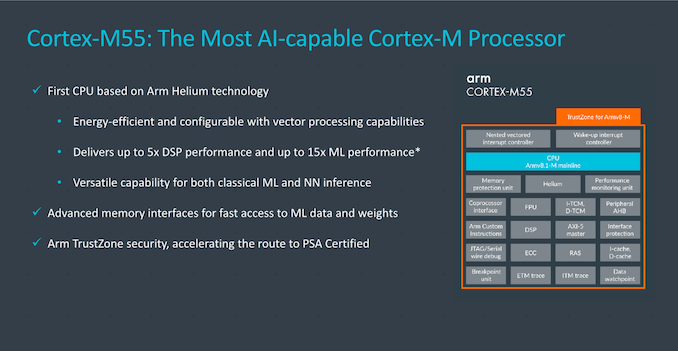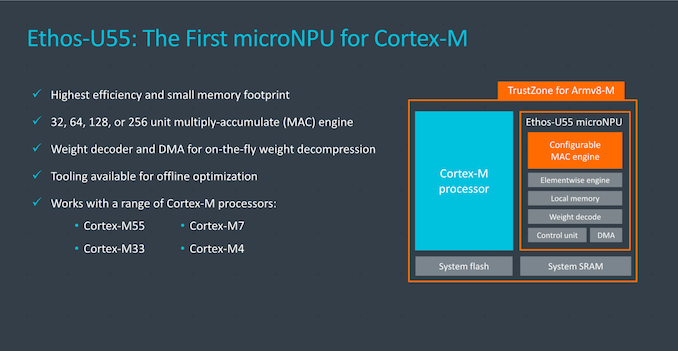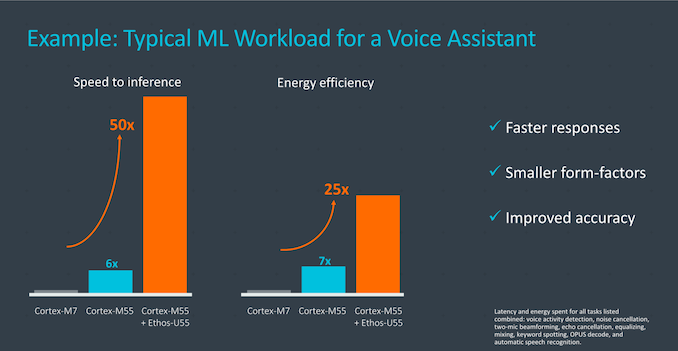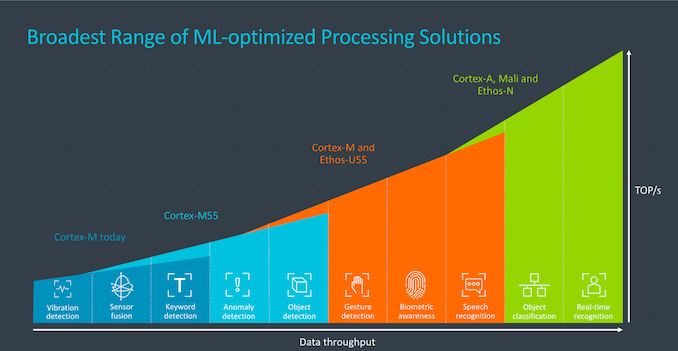ARM releases Cortex-M55 Core and Ethos-U55 microNPU

Recently, ARM announces its newest addition to its Cortex-M series, the new Cortex M55 Core. Together with its new CPU microarchitecture, ARM also introduced the Ethos-U55 as its MicroNPU companion. This is ARM’s first push into the dedicated neural processor IP market.
Who or What is ARM?
For those who do not know who is ARM, Arm provides IP for chips to deliver cloud services that allow organizations to securely manage the deployment of products throughout their lifecycle. Arm aims to delivers a complete Internet of Things (IoT) solution.
Here are some popular Single-board computers (SBC) and devices that you may have seen with an ARM chip!
| Product Name | SoC (System on Chip) | CPU Architecture |
| NVIDIA Jetson Nano | Nvidia Tegra | ARM Cortex-A57 |
| Raspberry Pi 4B | Broadcom BCM2711 | ARM Cortex-A72 |
| Rock Pi 4 Model B | Rockchip RK3399 | ARM Cortex-A72 ARM Cortex- A53 |
| Coral Dev Board | NXP’s iMX8M | ARM Cortex- A53 ARM Cortex- M4F |
| HiKey 970 | HiSilicon Kirin 970 | ARM Cortex-A73 |
Well now you have a rough idea on who ARM is, let us now look at its newest addition to its Cortex-M series, the new Cortex M55 Core.
Cortex-M55
The Cortex-M55, is Arm’s latest low power microprocessor core that is first to be based off Armv8.1-architecture. It features both Helium as well as Custom Instructions Capabilities. Helium also known as MVE (for M-Profile Vector Extension), is the new vector extensions and dedicated vector execution units in the M-class processor line-up. With this new addition, the Cortex-M55 core now has a 5x increase in DSP performance and with the addition of optimized instructions for Machine learning workloads, it gains an additional 15x performance improvement compared to the previous generation of M-cores.

The Cortex-M55 relies more on existing registers instead of vector registers like NEON and introduces new support for things such as lane prediction, loop prediction, and complex operations such as scatter-gather. More importantly, it does this by executing smaller chunks of data (32-bit) called beats in order to keep the silicon area of the IP to a minimum.
Ethos-U55 microNPU
Next up, we have the new Ethos-U55 microNPU, Arm’s first microNPU and extension to the Ethos Family. It is a small-scale NPU that scales from 32 to 256 MACs. The Ethos-U55 is slightly different from the Ethos-N series as it specifically targets the Cortex-M CPUs. For example, unlike the Ethos-N with independent IP blocks that work with SoC CCN-500 network, the Ethos-U is designed to work closely with a companion Cortex-M CPU and boost its processing capabilities. For example, the Cortex-M55 mentioned earlier is designed to work together with this Ethos-U55 microNPU with its Helium extension. It can also work with older Cortex-M processors like the M7, M4 and M33.

If you can see the Ethos-U55 MLP design, it is constructed with multiple compute engines, each with a few major components, the SRAM, MAC Compute Engine (MCE), and the Programmable Layer Engine (PLE). The Ethos-U55 has a much simpler design that focuses on area and power efficiency with small memory footprints. With its characteristics, the U55 have to be combined with an M-class CPU to serve as the controller. Let us look at the power of these 2 combined together:

Arm claims that for a workload such as a typical voice assistant, the Cortex-M55 is able to deliver up to 6x in inference performance and 7x improvement in power efficiency due to the Helium Extension. Combined with the Ethos-U55, Arm claims that the improvement can go up to 50x and 25x respectively! The performance improvements in such systems that use the M55 and U55 represent very major step-function increases over past generation solutions.
Where will they be applied?

Curious where can you apply these new IPs? Well, Arm said that it can be employed in a wide variety of embedded systems such as sensors, gesture detection, speech recognition and many more! For example, in a mobile, subsystems can use the IP inside the fingerprint sensor of the phone, audio chip for voice assistant purposes or also RF systems to optimize workloads such as antenna tuning. Possibilities are endless with the hundreds of M-class processors in the world out there that can be further enhanced with Machine learning.
Conclusion
What do you think of Arm’s new Cortex-M55 Core and Ethos-U55 microNPU? Let us know in the comments down below!
Arm has currently licensed the M55 and U55 to its lead partners and a wider range of licensing to other customers in the upcoming months. As you all know about IP, products with new designs will be released within 2 years, so do keep a lookout!
